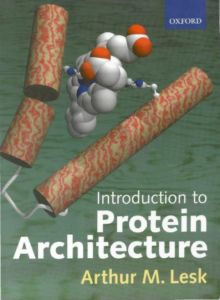Written in a clear and engaging style, and profusely illustrated with superb computer graphics, Introduction to Protein Architecture is a textbook for second and third year undergraduate students and beginning post-graduate students, and will be of interest to all biological and medical scientists whose work touches on proteins.
The structures and functions of proteins unlock the secrets inherent in genomes, including the human genome. The emphasis of this book is on protein architecture, on proteins as three-dimensional patterns. A new field, bioinformatics, has grown up around gene and protein sequences and structures. It has captured the interest of many scientists for its intellectual challenges, its potential for useful applications, and promising scope for careers. This book introduces the use of the World Wide Web in bioinformatics.
Written by one of the leaders in this field, Introduction to Protein Architecture explains the general characteristics of proteins that underlie the very great variety of folding patterns observed in nature. For specialists in structural biology, it contains the core of what they need to know. For students and workers in related disciplines, undergraduates or beginning graduate students in biology, chemistry, medicine, bioinformatics, and related fields it contains what they will be able to apply to their own work. Topics treated include: Pattern and form in protein structure; The building blocks; The relationship between amino acid sequence and protein structure; Secondary, supersecondary and tertiary structure; Classifications and hierarchies of protein folding patterns; Protein evolution; How proteins change conformation (and why).
To suit the needs of courses, each chapter includes recommended reading, lists of useful web sites, traditional exercises, and a new type of exercise called a weblem, for WEB-based probLEM.
In Collection
#6045
Read It:
Yes
#6045
Read It:
Yes
Architecture / Reference, Medical / Biochemistry, Proteins/ Structure, Science / Life Sciences / Biochemistry, Science / Life Sciences / Biology / Molecular Biology
|
|
||||||||||
